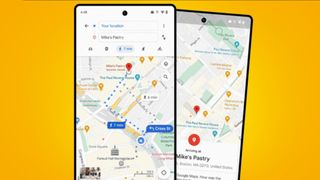Google Maps could soon be able to better know which direction you’re facing
Fancy Google Maps features like Immersive View are all well and good, but sometimes you just want the basics to work a little better. Fortunately, a new upgrade for Android phones will help solve a common Maps problem: your phone getting confused about the direction you’re looking.
A new message in the official Blog for Android developers (through 9to5Google) describes a powerful new API for Android phones called Fused Orientation Provider (or FOP), which promises to finally deliver “consistent device orientation for everyone.”
Your Android phone relies on “device orientation” for many things, including augmented reality and its compass. But one of the most common use cases is to show you which direction to walk if you’re late for a restaurant reservation in a new city.
Google Maps and other navigation apps still fail us here, leaving us spinning in confused circles trying to figure out if we can trust the blue dot and its directional beam. But FOP promises to provide “consistent device orientation” by “combining signals from the accelerometer, gyroscope, and magnetometer.”
Although Google Maps on Android already uses this API, the developer post says that Google “recently added changes to better handle magnetic disturbances, to improve cone reliability for Google Maps and third-party apps.”
Fortunately, this should also improve the experience no matter which Android phone you use, as it’s designed to compensate for “lower quality sensors and OEM implementations.” So whether you own a Google Pixel 8 Pro or another of the top Android phones, you should soon see Google Maps and other mapping apps become less confused about the direction you’re looking.
We show the way
Despite massive improvements in smartphone hardware in recent years, this device orientation problem in large urban areas is difficult to solve due to the limitations of GPS and compasses.
Therefore, it is still quite common for Google Maps’ blue dot and its focused beam to confidently lead you in the wrong direction in densely populated urban areas, especially if there are local magnetic disturbances.
While the new FOP API is more of an under-the-hood Android upgrade than an official update, it should improve your phone’s understanding of the direction you’re facing in Google Maps and other Android navigation apps.
The Android blog says that developers “regularly receive complaints from users when the orientation is incorrect,” showing that it’s still a common problem – and it’s good that FOP can make improvements even in phones with lower quality sensors.
With Waze also recently adding some useful driving alerts to tempt you from Google Maps, it shows that there’s still room for our mapping apps to make significant improvements – even though Google Maps appeared on phones way back in 2006.

